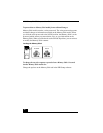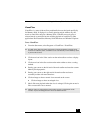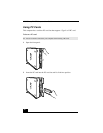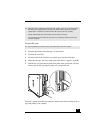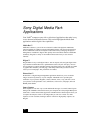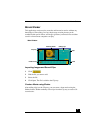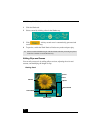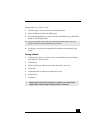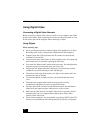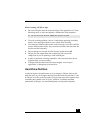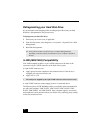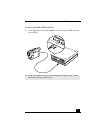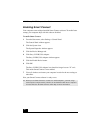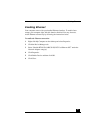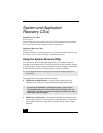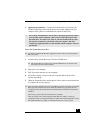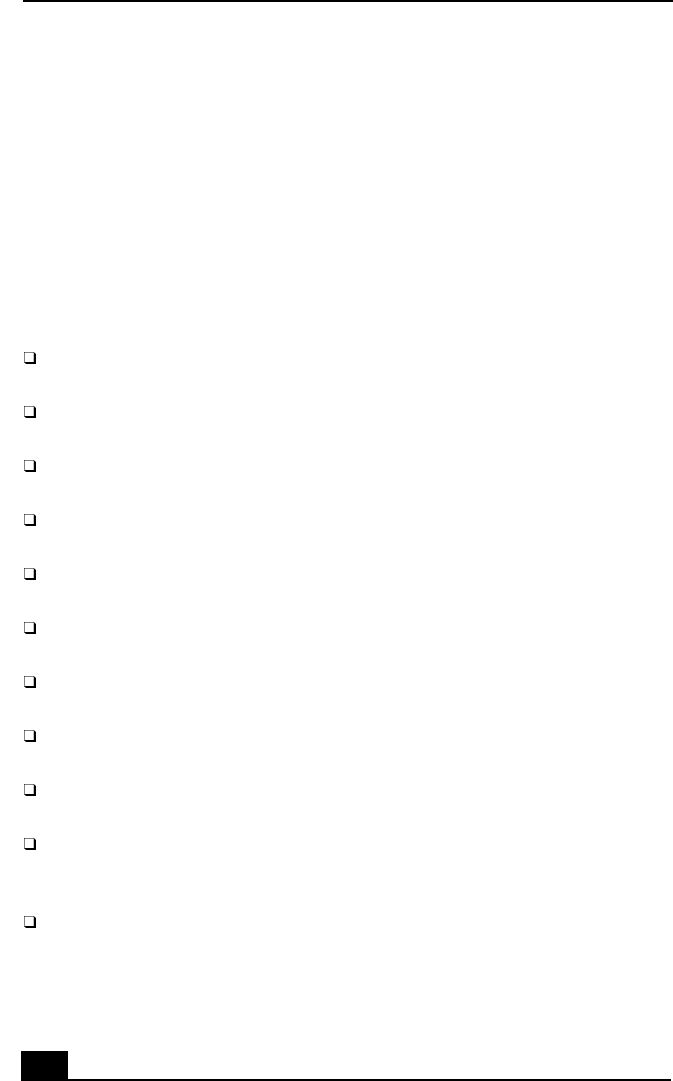
VAIO Slimtop™ LCD Computer User Guide
34
Using Digital Video
Connecting a Digital Video Recorder
Before connecting a digital video camera recorder to your computer, turn off the
power on the camera. After connecting the camera, turn the power back on. You
do not need to turn off the computer when connecting a camera.
Using DVgate
When capturing clips:
Do not use DVgate when the connected digital video peripheral is in Timer
Recording mode, as this could produce a malfunction in the peripheral.
Captures larger than 2 GB (9 minutes and 30 seconds) are automatically
continued in a second file.
You can record stereo audio (stereo 1) while capturing video. You cannot add
audio on the stereo 2 track after capturing the video data.
You cannot use different audio modes on the same tape. You should perform
a separate capture for each audio mode you wish to use.
DVgate does not support hard disk compression. You should not use disk
compression if you are planning to work with DVgate.
Title data is saved in the flash memory of a digital video camera and is not
transferred to tape by DVgate.
To avoid interruption of capture sessions, you should disable the screen
saver.
The drop frame compensation feature does not provide accurate
compensation adjustments for tapes recorded in LP mode.
For tapes that include a mixture of both SP and LP mode, the information
displayed by the capture progress indicator may not be accurate.
Make sure the video head of your digital video device is properly cleaned.
Anomalies that you see in captured data could be due to dust or other
particles on the video head.
The last frame captured is one frame before your selected [OUT] point. The
frame you see immediately after clicking the [OUT] button is not captured.



